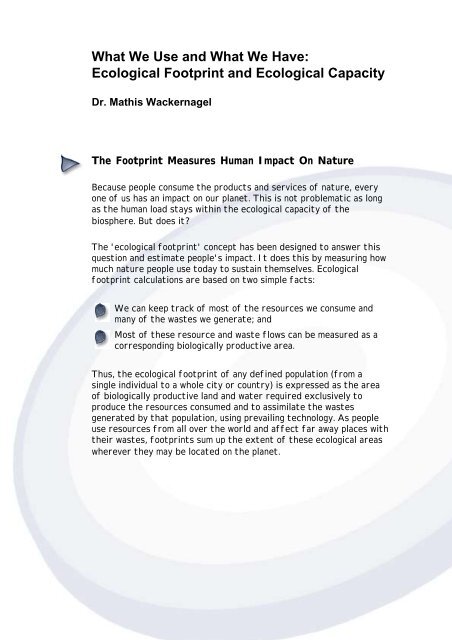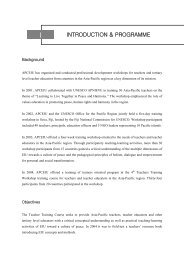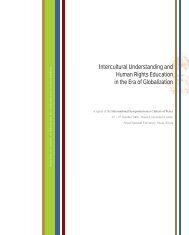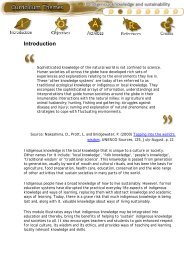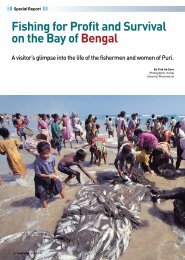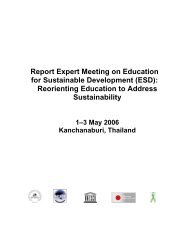Module 9 Consumer education - APCEIU
Module 9 Consumer education - APCEIU
Module 9 Consumer education - APCEIU
You also want an ePaper? Increase the reach of your titles
YUMPU automatically turns print PDFs into web optimized ePapers that Google loves.
What We Use and What We Have:<br />
Ecological Footprint and Ecological Capacity<br />
Dr. Mathis Wackernagel<br />
The Footprint Measures Human Impact On Nature<br />
Because people consume the products and services of nature, every<br />
one of us has an impact on our planet. This is not problematic as long<br />
as the human load stays within the ecological capacity of the<br />
biosphere. But does it<br />
The 'ecological footprint' concept has been designed to answer this<br />
question and estimate people's impact. It does this by measuring how<br />
much nature people use today to sustain themselves. Ecological<br />
footprint calculations are based on two simple facts:<br />
We can keep track of most of the resources we consume and<br />
many of the wastes we generate; and<br />
Most of these resource and waste flows can be measured as a<br />
corresponding biologically productive area.<br />
Thus, the ecological footprint of any defined population (from a<br />
single individual to a whole city or country) is expressed as the area<br />
of biologically productive land and water required exclusively to<br />
produce the resources consumed and to assimilate the wastes<br />
generated by that population, using prevailing technology. As people<br />
use resources from all over the world and affect far away places with<br />
their wastes, footprints sum up the extent of these ecological areas<br />
wherever they may be located on the planet.


